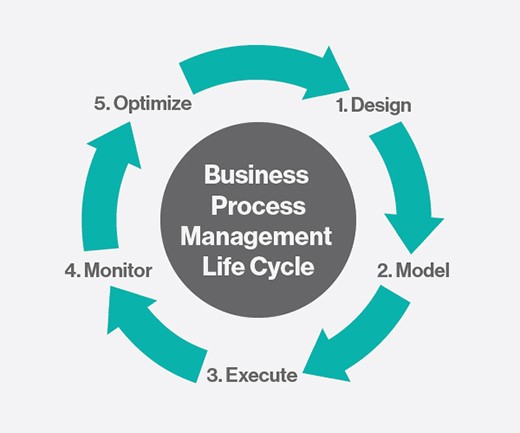Let’s be honest, in a generalized sense and from a businessperson perspective, we as people have a natural need to complicate things. This is especially true in terms of a business and its workflow of internal processes. From processing new customers to working in the field, and everything in between, your daily job is really about following one or several steps to complete business processes. Logically, the more efficient and effective you are in streamlining and organizing these business processes, the more accurate and productively the jobs gets completed and revenue is increased.
Consider the following steps when working to streamline your business processes and workflows:
STEP 1: Create an Overview and Outline all Business Processes
Start with creating a list of all the processes or workflows that your business follows daily. This should be broken down by department and then employee for extreme accuracy. List each process, write down what you believe the purpose of that process is, and then list all of the people within your organization involved with this process. Even if it seems like a simple or routine process, like managing work projects or check printing and check writing or even third party billing, if someone spends time and effort on a regular basis to complete the task, it’s a process. Add it to the list.
STEP 2: Prioritize your business processes
Read your list. The majority of business owners are surprised at just how many processes they and their employees must follow on a daily or weekly basis to do their work. Now review your list and prioritize each task in the order of importance. Although all business processes hold an importance to each business, start with listing the processes that would close the business if they did not get completed. End with processes that are not detrimental to the primary functionality of the business.
STEP 3: BREAK DOWN each business PROCESS
Now consider each task on your list from most important to least important. One-by-one, breakdown and outline each task process, step-by-step from beginning to completion of the task. The more detailed and specific, the more helpful this will be for you to refer back to. Creating a process diagram can be extremely helpful. Remember the K.I.S.S method (Keep It Simple Stupid). Many business processes are complex, so it’s easy to get caught up in all the various conditions, dependencies or decision points within any given process. What’s most important is to generally capture the beginning, middle and desired outcome of the process you’re trying to streamline.
STEP 4: get your team involved
Very few processes are ever perfect. And, many people find differing processes to be efficient, while providing the same outcome. Use your team to review each internal business process in order to gain perspective and expert knowledge from the person performing the task. With constantly evolving technology and knowledge, some of these processes are likely to be dated and truly lacking efficiency. This is exactly why we are completing this internal business process evaluation. We are seeking to identify those processes needing improvement in order to be truly effective for your business.
Involve your colleagues, co-workers, subordinates and supervisors. Get feedback from anyone directly or indirectly involved in the business workflow chain or the outcomes that the process produces. It is important to note suggestions on streamlining each process. Even the smallest improvement can have a big impact.
STEP 5: AUTOMATE YOUR BUSINESS WORKFLOW
Now that you have an accurate and detailed list of your internal business processes, you’ve broken down each process intricately, and you’ve gathered feedback from your team, it is time to consider your areas of business expertise and the areas in which you are lacking. Of course your business is an expert in your primary business, but when considering increasing productivity for the supporting areas of your business, such as electronic data interchange (EDI), check printing and check writing, third party billing, rebate processing and rebate fulfillment, barcode labels, etc., it can also be a benefit to locate a third party expert to complete these redundant tasks.
Business process outsourcing (BPO) is the delegation of one or more IT-intensive business processes to an external provider that, in turn, owns, administrates and manages the selected processes based on defined and measurable performance metrics.
Choosing to partner with a BPO offers many benefits:
- Productivity improvement
- Optimum utilization of resources
- Reduction in processing cost
- Frees up employees to focus on core business areas
- Cater to changing customer demands
- Cutting-edge technology at a lower cost
- Many BPOs are based in the United States
Read more about partnering with a BPO expert and how to choose the right BPO for your business at www.integrationinc.com.
Similar Posts
Ready to discuss your EDI or BPO needs?
Our team can’t wait to talk to you about your business's unique needs so we can provide a solution quickly and cost effectively.
Let’s talk today
